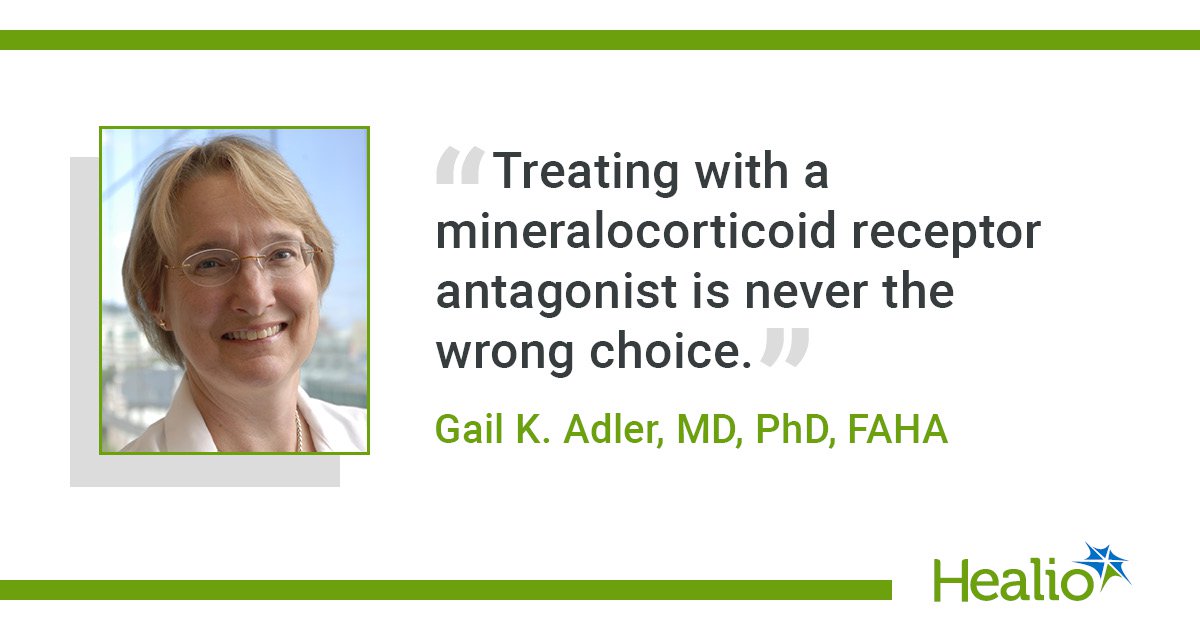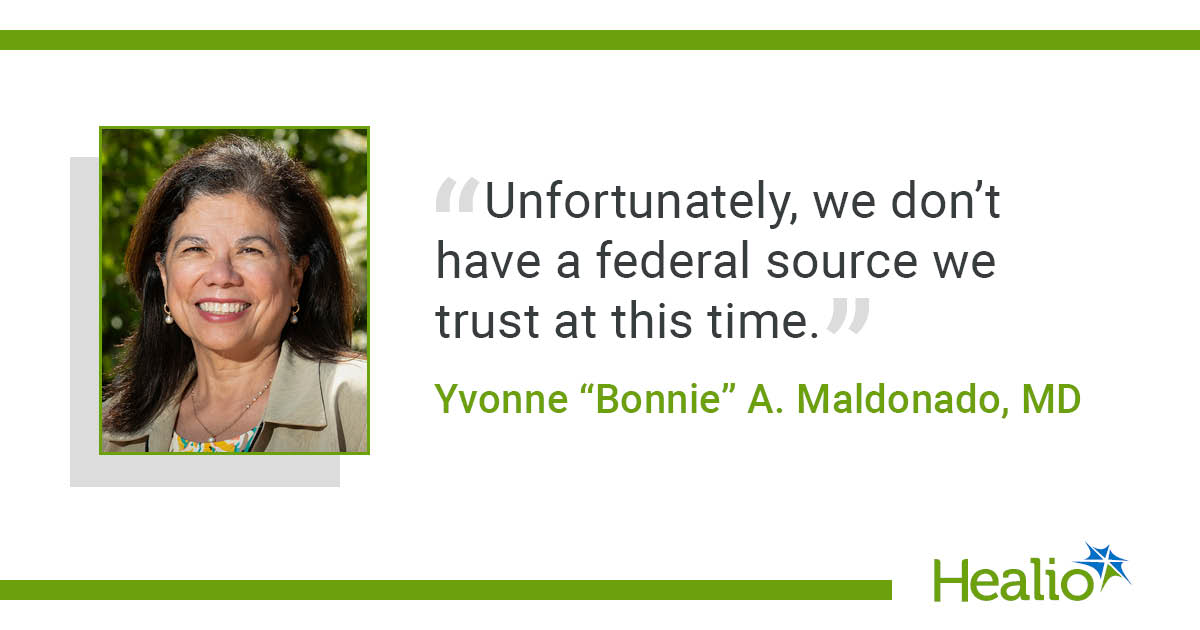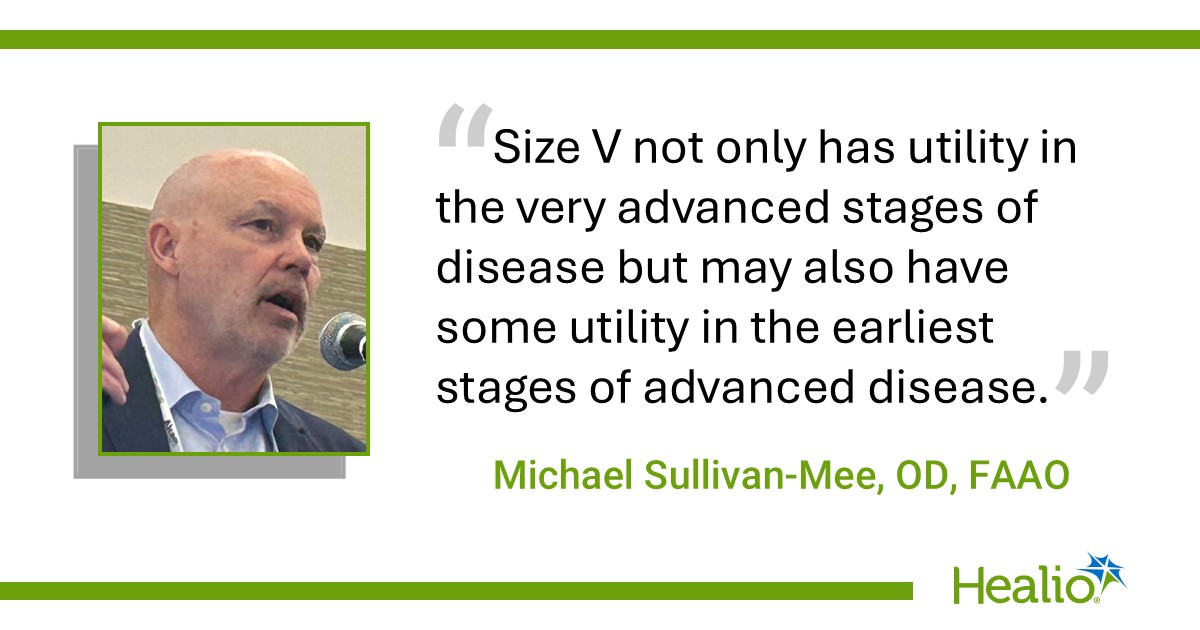August 14, 2025
3 min read
Key takeaways:
- An updated clinical practice guideline recommended screening all people with hypertension for primary aldosteronism.
- Mineralocorticoid receptor antagonists should be prescribed as first-line medical therapy.
SAN FRANCISCO — A new clinical practice guideline for primary aldosteronism emphasized screening all patients with hypertension.
The Endocrine Society published its first update to the primary aldosteronism clinical practice guideline since 2016 in The Journal of Clinical Endocrinology & Metabolism. The guideline, which was also discussed during a symposium at ENDO 2025, focused heavily on expanding screening for primary aldosteronism and discussing treatment options with patients, especially those who may be candidates for surgery.

Gail K. Adler, MD, PhD, FAHA, professor of medicine at Harvard Medical School, chief of the cardiovascular endocrinology section in the division of endocrinology, diabetes and hypertension and co-chair of the department of medicine promotion committee at Brigham and Women’s Hospital and chair of the guideline’s writing committee, said primary aldosteronism screening was a major focus of the guideline because it is being performed in very few people. This is concerning, Adler said, because primary aldosteronism is present in 5% to 14% of people with hypertension who are screened through primary care and up to 30% of those attending referral centers. Some studies cited in the guideline found that less than 1% of adults with hypertension are screened for primary aldosteronism.
“Patients with primary aldosteronism have increased cardiac damage, renal damage and cerebrovascular damage as compared with people with primary hypertension,” Adler told Healio. “When you have a targeted treatment that reduces or blocks the excess aldosterone, you decrease this excess cardiovascular risk. By simply treating high blood pressure and not treating the excess aldosterone, that’s when you have this increased CV risk.”
Screen all people with hypertension
Adler said the need for targeted treatment for people with primary aldosteronism makes screening essential. The guideline’s first recommendation is primary aldosteronism screening should be conducted for all people with hypertension. The guideline also recommends screening by measuring both plasma aldosterone and resin levels.
Adler said one change from previous guidance is that there is no longer a recommendation to perform an aldosterone suppression test to confirm a positive primary aldosteronism result. The new guideline recommends aldosterone suppression testing for patients with “an intermediate probability for lateralizing primary aldosteronism.” The test is also recommended for individuals who may be eligible for surgery.
“There is now evidence out there that these tests have a lot of false negatives and false positives,” Adler said of aldosterone suppression tests. “They are not reliable. We’re not suggesting you use them to prove the presence of primary aldosteronism. Some people want to use them to help guide whether the aldosterone is coming from one adrenal [vs.] both adrenals.”
Medical vs. surgical therapy
The guideline recommends primary aldosteronism-specific therapy for adults who test positive for the condition. Patients who are not candidates for surgery should be prescribed mineralocorticoid receptor antagonists. For eligible patients who choose surgery, a unilateral adrenalectomy should be performed.
In another recommendation, the guideline states that choosing medical therapy vs. surgical therapy should be made in part based on lateralization of aldosterone hypersecretion and whether a patient is a candidate for surgery. A CT scan plus adrenal venous sampling should be performed before a treatment approach is decided, according to the guideline.
“I think treating with a mineralocorticoid receptor antagonist is never the wrong choice,” Adler said. “If you have primary aldosteronism and you don’t know whether you should do surgery or treat medically, you could always treat medically and later decide whether or not to do surgery.”
Adler said there is an emphasis on health care professionals discussing treatment options with patients before moving forward with therapy.
“Work with your patient to decide on the proper medical treatment, [whether it is] just starting a mineralocorticoid antagonist or working to see whether it lateralizes and you would remove an adrenal,” Adler said.
Future research
Adler said more research is needed to further advance the treatment of primary aldosteronism, especially for identifying the source of excess aldosterone. Adler said advances in imaging could one day shift the treatment paradigm for the condition.
“Tracers are under investigation, but they are not clinically available,” Adler said.
The guideline includes other areas for future research, including comparing epithelial sodium-channel inhibitors with mineralocorticoid receptor antagonists. The authors recommended the use of mineralocorticoids over epithelial sodium-channel inhibitors, though they noted no studies directly comparing the two classes of medication were found during a systematic review.
Other possible areas of future research listed in the guideline are an assessment of the long-term effects of end-organ damage with use of epithelial sodium-channel inhibitors and studies assessing more diverse populations with primary aldosteronism, including people who are salt-sensitive.
Reference:
Adler GK, et al. J Clin Endocrinol Metab. 2025;doi:10.1210/clinem/dgaf284.
For more information:
Gail K. Adler, MD, PhD, FAHA, can be reached at gadler@bwh.harvard.edu.









